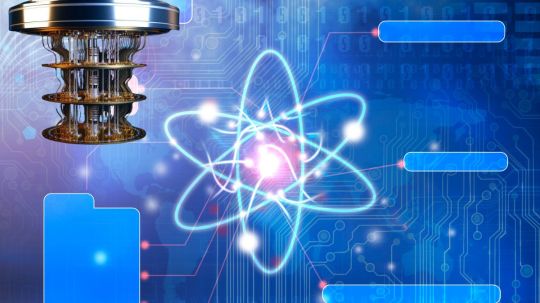#QuantumFlagshipprogram
Explore tagged Tumblr posts
Text
A 2D Quantum Simulator Captures Real-Time ‘String Breaking’

Quantum Simulator
A multinational team of researchers reported the first direct detection of “string breaking” in a programmable two-dimensional quantum simulator, advancing fundamental physics. This landmark Nature article from June 4, 2025, pushes computer power limits and opens new avenues for high-energy physics research.
QuEra Computing, Harvard University, and the University of Innsbruck scientists demonstrated real-time gauge-theory dynamics that were previously thought impossible.
Deciphering String Breaking
String breaking is fundamental to lattice gauge theories (LGTs), which explain many particle and condensed matter physics events. Well-known examples include contention, which keeps quarks like protons and neutrons inside hadrons. The “string” of gluon fields connecting a quark and an antiquark stores energy that grows linearly with their separation. When this energy generates new quark-antiquark pairs from the vacuum, the original string will “snap” or “break”.
The extreme conditions needed to empirically see this phenomenon in nature make it difficult. This new study gives a tabletop analogue of this basic component of the strong nuclear force, providing a new insight.
Simulating Strong Force using Atoms
Researchers used QuEra's Aquila neutral-atom platform to assemble several dozen rubidium atoms in a Kagome-shaped optical-tweezer lattice. This configuration is crucial because it closely mimics the strong nuclear force mathematical model and naturally provides a constraining lattice-gauge theory.
This simulation heavily uses Rydberg obstruction. Rydberg atoms "block" each other, thus only one can be excited at a time due to van der Waals interactions. This action naturally produces a linear confinement potential and a local U(1) symmetry for two synthetic charges, allowing researchers to precisely tune their string tension and masses.
Considered the lowest circumstances needed to identify this event. Profited from neutral atom simulator experimental control advances, noted Peter Zoller teammate Torsten Zache.
Experimental Prowess: Equilibrium to Dynamics
They performed several complex checks to see if the string broke:
Equilibrium: Flaws were evident when the atom array's ground state was prepared adiabatically. Because of this, they could distinguish restricted phase zones with broken string configurations from those dominated by fluctuating strings. The probability of broken and unbroken string states were compared to global detuning and Rydberg blockade radius.
Dynamic Quenches: Local control lets them “quench” string states from atomic detuning to study string breaking dynamics in real time. These nanosecond dynamics showed a fascinating many-body resonance phenomenon. The strings broke and reformed due to local detuning “kicks,” revealing resonance peaks that suggest many-body tunnelling. Different string configurations were quenched to various local detuning values and monitored for time-evolved probability.
It expands on past one-dimensional demonstrations to two spatial dimensions, which is fast saturated for theoretical and numerical approaches.
Why This Matters: Physics' Quantum Leap
This firsthand finding of string breaking in a 2D quantum simulator affects many scientific fields:
The ability to model real-time gauge-theory dynamics with dozens of qubits supports quantum technology as a powerful discovery tool by pushing classical simulations to their limits. First author Dr. Daniel González-Cuadra, an assistant professor at the Institute for Theoretical Physics (IFT) in Madrid, said observing string breaking in a controlled 2D environment is vital to exploring high-energy physics utilising quantum simulations. It shows how neutral-atom devices can solve theoretical problems.
Bridge to Particle Physics: Quark confinement breaks strings in quantum chromodynamics (QCD). The fresh insights these tabletop experiments provide into the fundamental forces regulating the universe may help future lattice-QCD and collider research.
Scalable Neutral-Atom Platform: Controlled gauge-theory dynamics in two spatial dimensions utilising dozens of qubits show the adaptability and scalability of neutral-atom arrays like Aquila. This piece shows their ability to handle more complex many-body situations. “This collaboration highlights the importance of open, programmable neutral-atom hardware for fundamental research,” said QuEra VP of Quantum Computing Services Alexei Bylinskii, a key author. Researchers can use Aquila's multi-qubit capabilities to accelerate quantum-information science, high-energy, and condensed-matter discoveries.
Foundation for Future Discoveries: Professor Peter Zoller, a senior author and quantum simulator pioneer, stressed the relevance of two-dimensionality, “Gauge theories govern much of modern physics.” This prepared for future discoveries. It lays the groundwork for investigating non-abelian gauge fields and topological matter in two dimensions with strings that bend.
QuEra Computing supplied hardware time to Aquila, which was financed by the Austrian Science Fund (FWF), the EU's Quantum Flagship program, the NSF, the DOE, and industry partners. Quantum simulation changed with this partnership between theoretical high-energy physics and experimental quantum capabilities.
#QuantumSimulator#stringbreaking#qubits#quantumchromodynamics#QuantumComputing#QuantumFlagshipprogram#News#Technews#Technology#Technologynews#Technologytrends#Govindhtech
0 notes